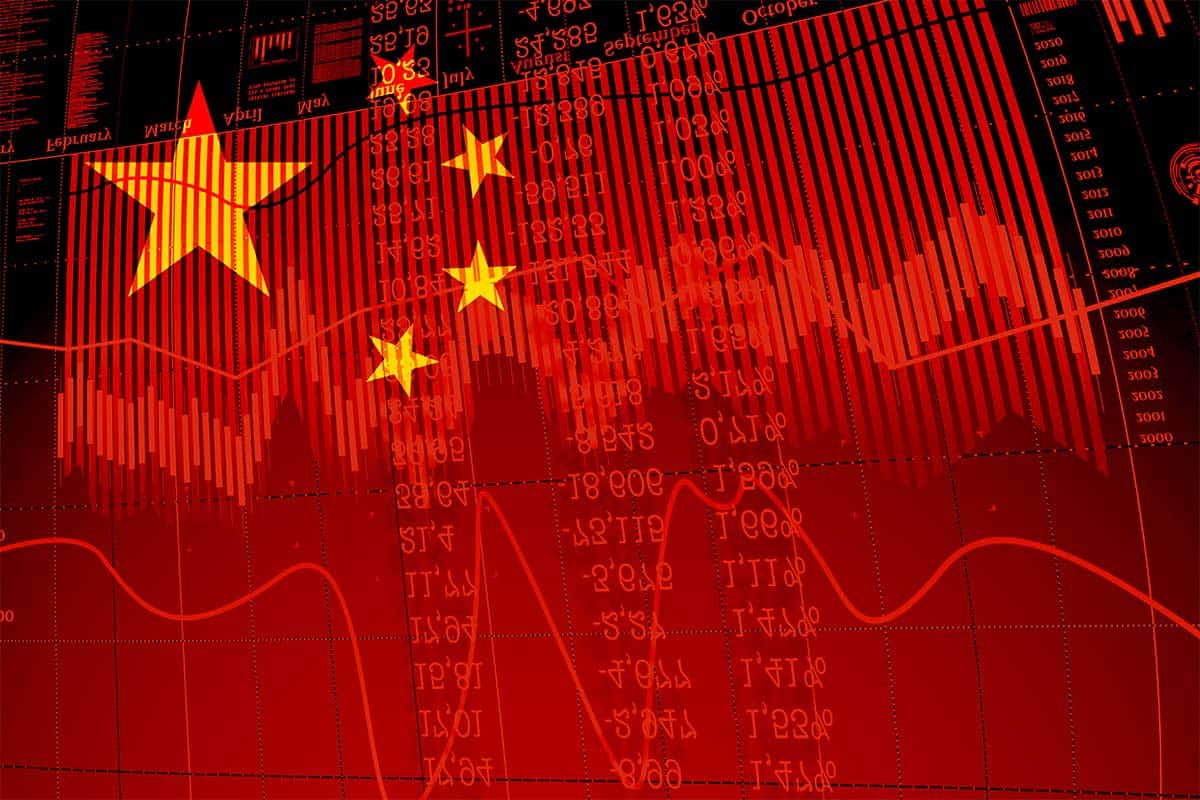Being the first country to get hit by the Coronavirus, China’s economy took a massive hit in the early months of 2020. Retail sales plummeted, industrial production dropped, and China’s economy was on the brink of a collapse.
China’s economy contracted by a staggering 6.8% YoY in Q1 of 2020, which is their first-ever quarterly data contraction since records began in 1992. It’s also the first time Chinese authorities have reported a negative GDP result since 1976.
Despite the bleak start to the year, China’s economy has recovered better than any other country post-Covid. Continue reading to find out how the Chinese economy has fared since the Coronavirus outbreak.
The rise of China’s economy started as early as March with industrial production increasing by a whopping 32% month-to-month (following a 23% fall in February). These numbers suggested that production was back to 96% of its December level, which is a considerably stronger recovery than indicated by the Purchasing Managers’ Indexes (PMI) surveys.
China’s trade balance also returned to surplus in March totalling US$19.9 billion, compared with the US$7.1 billion deficit in January and February. Despite China ramping up Covid-19 containment measures in key markets to contain the virus, the country’s exports rebounded faster than imports due to the delayed orders finally dispatching.
According to a PWC report, the digital economy played a significant role in China during the Covid-19 outbreak and the subsequent period when lockdown and control measures such as factory shutdowns came into effect.
China extensively applied digital technologies during this period such as:
- Robots delivered medical supplies, which reduced the infection rate among healthcare workers.
- Intelligent image analysis technology improved the speed and accuracy of virus diagnosis.
- Telemedicine made it possible to consult medical experts remotely.
- Other digital technologies, including AI, big data and cloud computing, helped with pandemic mapping as well as crowd and infected individual tracking.
During the lockdown period, digital economic activities such as online education, remote working, food delivery, retail e-commerce, and online entertainment also became an essential part of everyday life in China.
As a result, people’s lifestyles and work habits were transformed, meaning the digital economy’s rapid growth will likely continue in the Post-Pandemic era. China also has some of the world’s largest and most advanced enterprises in the digital sector, including Huawei and Tencent. These companies are heavily invested in cutting-edge technologies that play a significant part in China’s digital economy’s continuous growth.
China’s economic recovery was driven mainly by its industrial sector, where growth returned to its pre-Covid-19 trend in August. A lot of this activity came from housing and infrastructure construction as consumption trends remained subdued.
As other industries started to pick up, China’s retail sales dropped by over 15% in March and continued to decrease. While nominal sales grew for the first time in 2020 in August, the real number decreased by another 1.1% YoY in August (compared with 2.8% YoY in July).
It wasn’t until the end of Q3, going into Q4 that China’s retail sector finally started its recovery with sales increasing by 4.6% YoY in October (up from 2.5% YoY in September), which is only the second positive reading in 2020. Although, retail sales growth, especially in nominal terms, remains below its pre-Covid levels.
While financial analysts tend to take China’s growth figures with a pinch of salt, there is no denying that the world’s second-largest economy is leading the way in the recovery from Covid-19. Among members of the Group of 20 (G-20), China is the only economy to rebound as early as the second quarter, and its growth shows no signs of abating.
The latest data from China show its economic recovery continued into the start of Q4, primarily driven by heavy industry, supported by construction demand. While consumption levels remain below pre-Covid growth, retail sales are finally bouncing back into the positives displaying increases for the first time in months.
China emerged smartly from its record first-quarter slump while containing the virus, and had the lowest per capita increase in Covid-19 cases and deaths of the major economies. The country also had the lowest unemployment rate after Japan in the past six months. Additionally, China’s industrial production growth rate remained unchanged going into Q4, increasing by 6.9% YoY in October, which highlights the sector’s key role in China’s post-COVID-19 growth.
At this point, China is the only G-20 economy strong enough to show increases in industrial production and GDP this year.
According to recent data, China’s economy is predicted to expand by 1.8% in 2020 and 9.5% in 2021. In the context of the digital economy, the Covid-19 pandemic will most likely bring more opportunities than unforeseen dangers.
The digital economy now accounts for 36% of China’s GDP and is expected to account for more than 50% of the country’s GDP by 2030. Should this happen, China will likely become one of the global leaders in the digital economy.
Although the recent tension between China and the US poses a significant challenge for some Chinese companies that still rely on American technologies. On the other hand, aggressive US regulations on tech companies could break up US-based businesses, creating a competitive advantage for tech companies in China that don’t rely on US technology.
Stay Informed & Connected with INAA
We’re the International Association of Independent Accounting firms, established over 25 years ago to facilitate cross-border business.
Here at INAA, we connect accounting firms who aim to deliver quality professional services around a shared vision to make global business personal, and take personal business global. Our collaborative association of international businesses is committed to being a part of the worldwide accountancy and gender inclusivity.
Join today to start building powerful business relationships.

